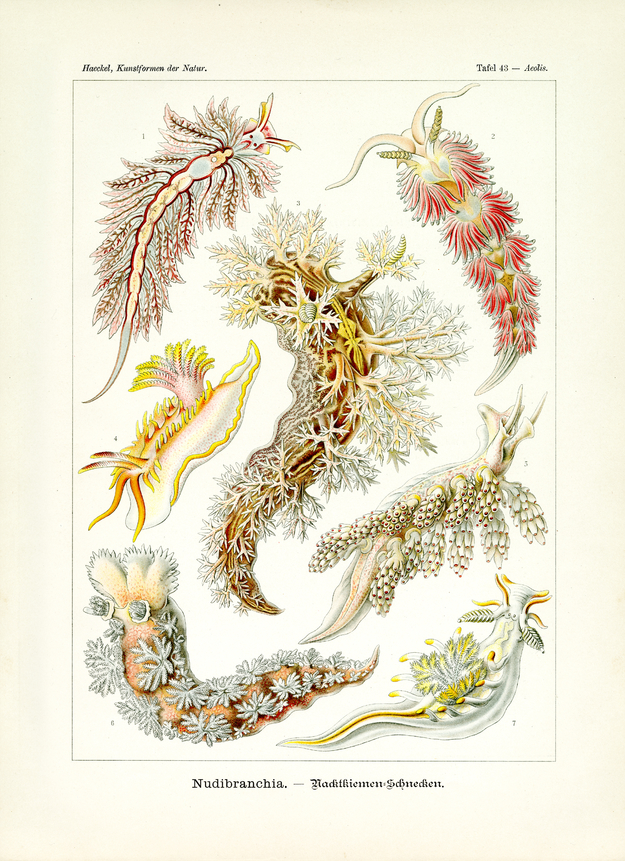Translation of the original German introduction by Ernst Haeckel:
Phylum of Mollusca (Weichtiere); - subclass of Gasteropoda (Schnecken); - legion of Opisthobranchia (Hinterkiemer); - order of Nudibranchia (Nacktkiemer).
The highly variable order of Nudibranchia belongs to the legion of Opisthobranchia and is distinguished from the others by a complete absence of shell and coat that form the shell; since they, however, have these important protective organs of the soft snail body in their young age (embryos and larva) we have to conclude, according to the basic law of biogenetics, that even these ‘naked snails’ – like all other Gasteropoda – originate from shell carrying proto-snails. The reason for the phylo-genetic involution of coat and shell is connected to the way of living of Nudibranchia, which usually hide and slowly crawl in between the dense branches of algae trees along the seashore; here, a heavy, rigid lime shell would be obstructive to free locomotion. Nudibranchia have achieved such protective similarity with their surrounding through adaptation with the multiple forms and colours of aquatic plants, safeguarding them from attacks of other marine animals. Many are characterized by an excessive coloration and delicate structuring of their tender, most supple and tensile body.
At the front, broader end of the ovular or leave-shaped body one or two pairs of tentacles are seen in Nudibranchia; the anterior, smaller ones are ‘lip-sensors’ of simple formation; the posterior bigger ones are ‘smell-sensors’, usually retractable into sheaths and characterized by a flakey structure. Unlike in other Mollusca, where the gills are concealed between foot- and coat-rim and protected by the dorsal shell, they have moved in Nudibranchia, due to involution of coat and shell, to the ridge; here they are seen openly and uncovered in the form of numerous tender threats, leaves, feathers, small tree like shapes etc. At times the gills appear in two lateral rows (fig. 3, 5 and 6) or in numerous transverse rows (fig. 1 and 2), at times they form a corona that surrounds the anus in the form of a star (fig. 4 and 7).
Translation by VR Translators Bangalore
We've scanned the original lithography at 1200dpi on the Epson A3 scanner of A3 scanner huren. You can download a 400dpi JPEG here.
